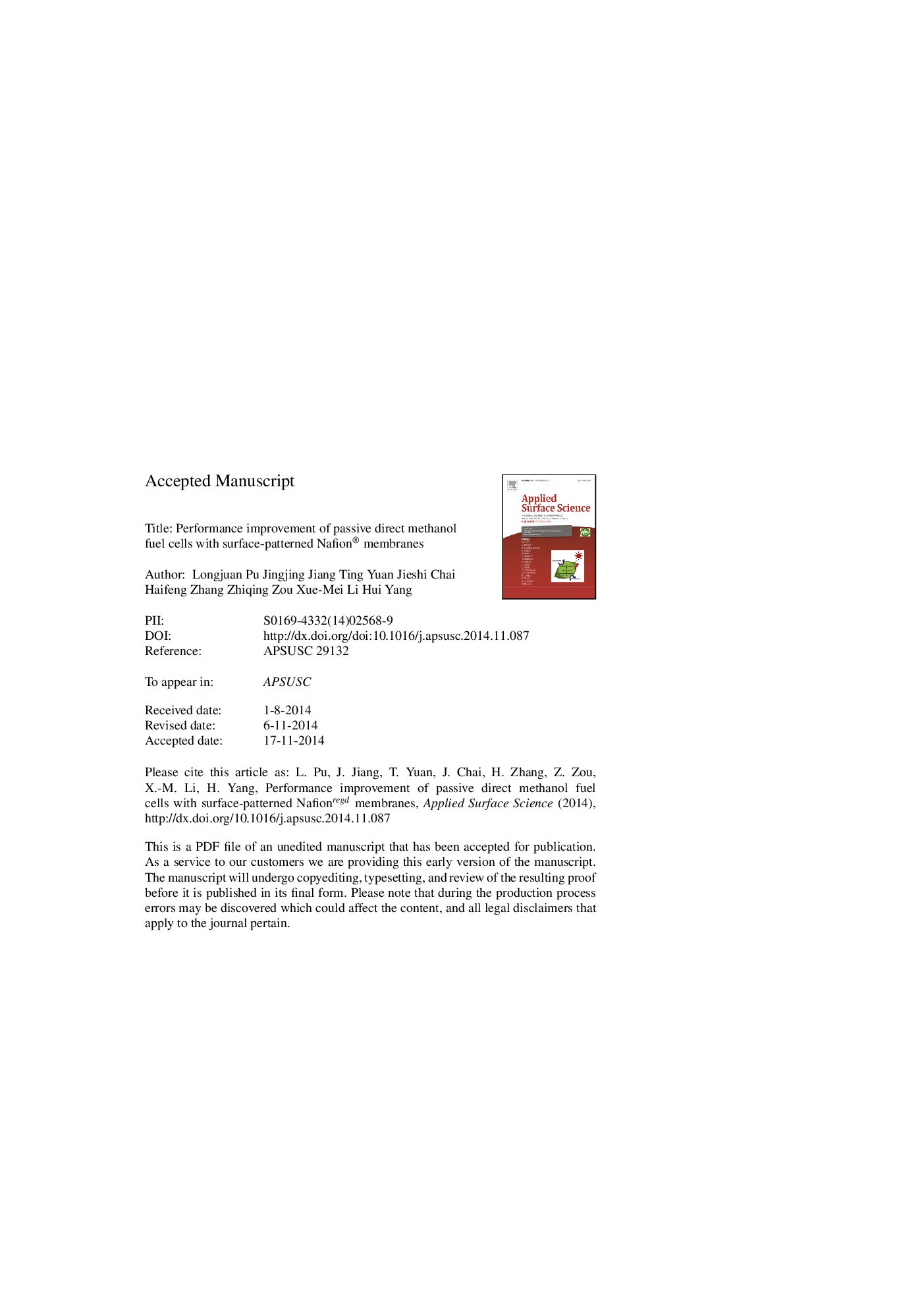| Article ID | Journal | Published Year | Pages | File Type |
|---|---|---|---|---|
| 5357583 | Applied Surface Science | 2015 | 32 Pages |
Abstract
Nafion® 115 membrane, patterned by thermal imprint lithography on the anode side, is used for passive direct methanol fuel cells (DMFCs). The membrane roughness factor, defined as the ratio between the actual and projected membrane surface area, was investigated for its effects on the performance of the DMFCs. When the anode Pt-Ru (1:1) catalyst loading is 1.0 mg cmâ2, the maximum power density of the DMFC with a surface-patterned membrane (roughness factor: 5.4) using 3.0 M methanol as the fuel at 25 ± 1 °C reaches 27.2 ± 0.3 mW cmâ2, an increase of â¼57.2% in comparison to DMFC using the pristine membrane (roughness factor: â¼1.0). Further, electrochemical characterization indicates that increased roughness factor of the membrane results in increased electrochemically active surface area and reduced charge transfer resistance in the cell. These performance improvements are ascribed to the increased surface roughness which enlarges the membrane/catalyst interface, possibly facilitating mass transport of the fuel and improving anode catalyst utilization. Thus, patterned membranes have great potential in improving the performance of fuel cells and reducing catalyst loading.
Keywords
Related Topics
Physical Sciences and Engineering
Chemistry
Physical and Theoretical Chemistry
Authors
Longjuan Pu, Jingjing Jiang, Ting Yuan, Jieshi Chai, Haifeng Zhang, Zhiqing Zou, Xue-Mei Li, Hui Yang,
